German cuisine is already highly diverse and there are specialties in all regions. Of course, this is also due to the different historical development of the German lands. East Germany has also developed its own dishes. Many of them originated in the GDR or became popular in its time. GDR food, which was easy to cook with the resources available in the GDR, have become particularly popular.
Potatoes, pork, chicken and vegetables grown in the GDR were available to all GDR citizens. And also a certain influence from the kitchens of the other states of the Council for Mutual Economic Assistance such as Hungary or the Soviet Union (today Russia, Ukraine and others) make themselves felt. Therefore, with this article we want to learn with you more about the GDR food and its best dishes and drinks.
Our top 10 dishes of GDR food
There are many dishes from the GDR, all of which have their own charm. Also, the GDR cuisine was quite different in the different regions. In Mecklenburg they cooked differently than in Saxony and there again differently than in Berlin or Thuringia. Nevertheless, there are a few classics that almost everyone in the new federal states will know, partly because many of the dishes have survived to this day in the kitchens of the former GDR. Therefore, we have written down a top 10 of the best GDR dishes that you can still easily find today and eat well in restaurants.
Solyanka (Soljanka)
It is probably the most practical stew of all, because in the solyanka all kinds of food leftovers could be used. The sour, sometimes somewhat spicy soup was the perfect import from “Big Brother,” the Soviet Union to the GDR. The word, by the way, comes either from the Russian word for village, selo, or from the word for salt, sol. Both make sense, because the dish is relatively simple to prepare and therefore fits well in the countryside. However, solyanka also contains many salty ingredients such as pickled cucumbers.
In GDR cuisine, solyanka typically included peppers and celery in addition to the sour cucumbers, ham, bacon and onions. Often, solyanka in East Germany is served with parsley and olives. To this typically a slice of lemon is added. To this day, solyanka is one of the most common dishes in the entire Eastern Bloc.
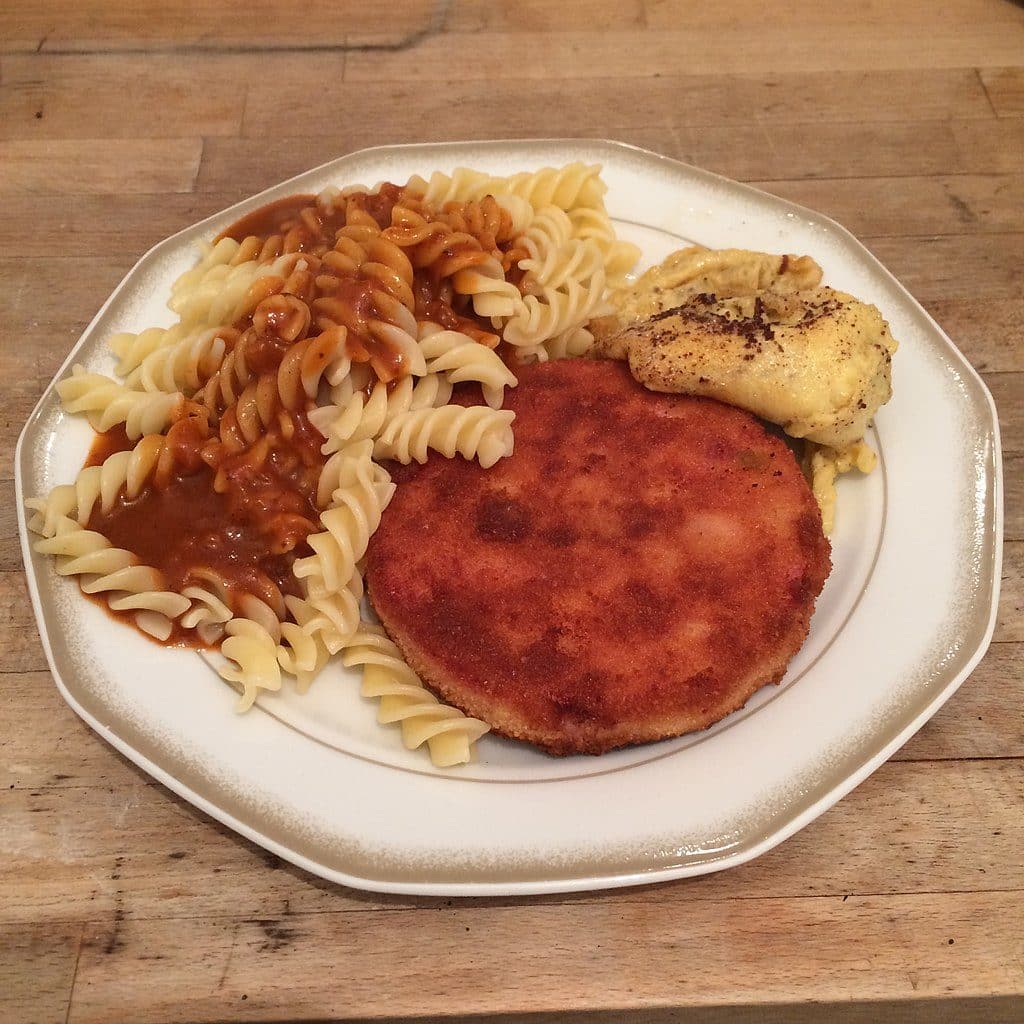
Jägerschnitzel (Hunter’s Schnitzel)
It sounds like a nice piece of wild boar meat, maybe some tasty mushrooms and whatever else the forest has to offer. But when ordering it in an East German restaurant, one or the other visitor has probably already experienced a surprise. That’s because the schnitzel consists of slices of hunter’s sausage (German: Jagdwurst) that are dredged in flour, egg and then breadcrumbs like a schnitzel and then fried. This was usually accompanied by letcho and spirelli, the twisted noodles that were also popular in the GDR.
Sausage goulash (Wurstgulasch)
Sausage goulash comes from Saxony and was a frequently cooked meal, especially in schools, kindergartens and vacation camps. In combination with noodles, which usually came in the form of spirelli from Riesa, children especially love this food. The sausage used for real sausage goulash is mainly hunting sausage. The color is given by a little tomato paste or ketchup. The sauce, however, consists mainly of meat broth. Onions, paprika, flour and spices are also added.
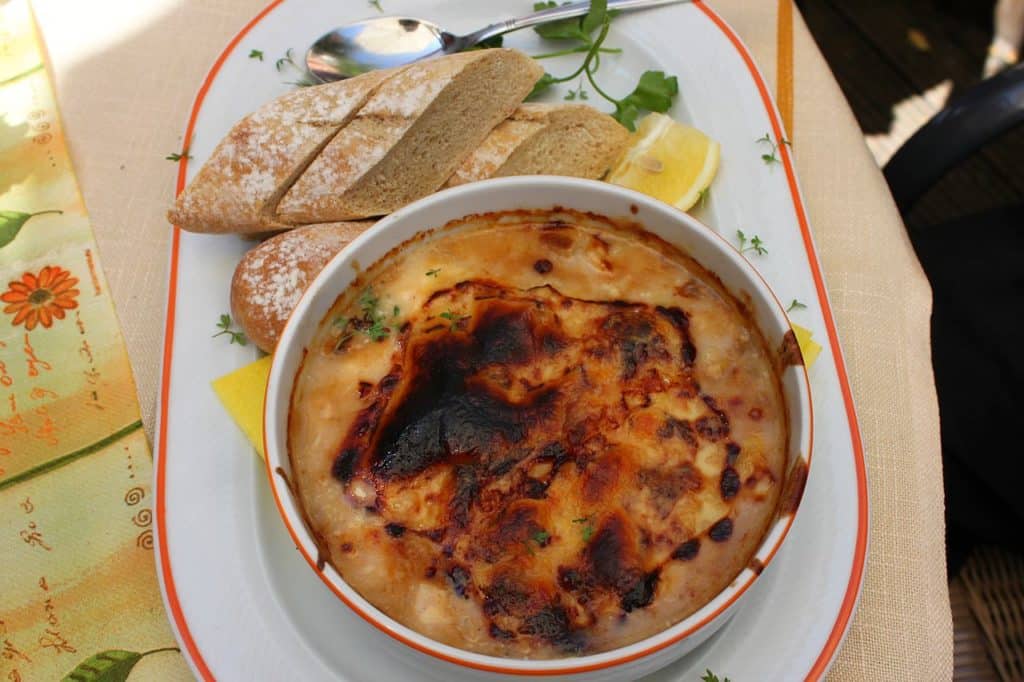
Ragout fin (Würzfleisch)
It is the East German equivalent of ragout fin – Würzfleisch. While poultry was often used for ragout fin, the GDR Würzfleisch was prepared exclusively with pork. The cooked meat was diced. The broth of the meat could also be used for a lot of other dishes. The spiced meat was then usually served as an appetizer, sometimes as a main course. It was one of the most important dishes on the menus of the restaurants of the HO, the Handelsorganisation which administered most restaurants and many shops.
Steak au four
Würzfleisch is also the basis for another dish of GDR cuisine: steak au four. In fact, the GDR culinarians were quite capable of the language of the class enemy and thus created the “baked” steak au four. A pork steak is used, which is covered with the previously described Würzfleisch and then baked with cheese in the oven. In addition, it usually has fries and vegetables such as peas. To the Würzfleisch, as well as to the steak au four, Worcestershire sauce was usually served in the restaurants of the GDR. Actually this sauce was produced in the GDR and has quite a long tradition there.
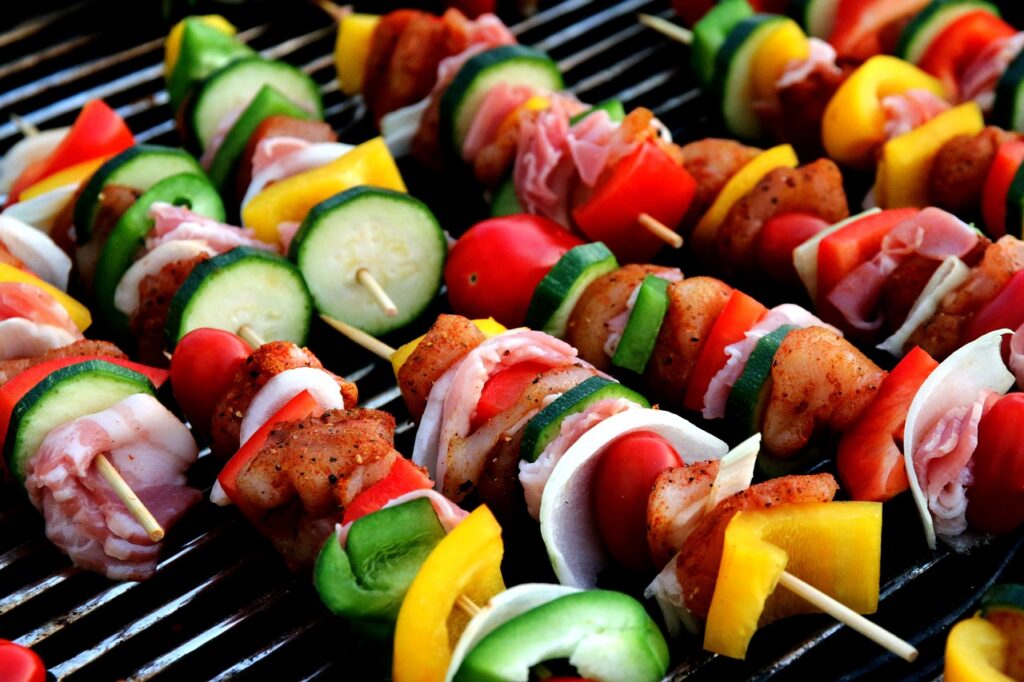
Shashlik (Schaschlik)
Shashlik in East Germany is a wonderful example of how GDR cuisine transformed dishes from brother countries into something completely new. Shashlik originated primarily in the countries of the Caucasus and had long been prepared in the other republics of the former Soviet Union. However, there it is rather simple meat or vegetables on a skewer, also otherwise known as shish kebap, which is then grilled. In East German cuisine, however, shashlik is heavily marinated and pan-fried. Liver is also often used as an ingredient here – I’m not aware of this in the Eastern European version.
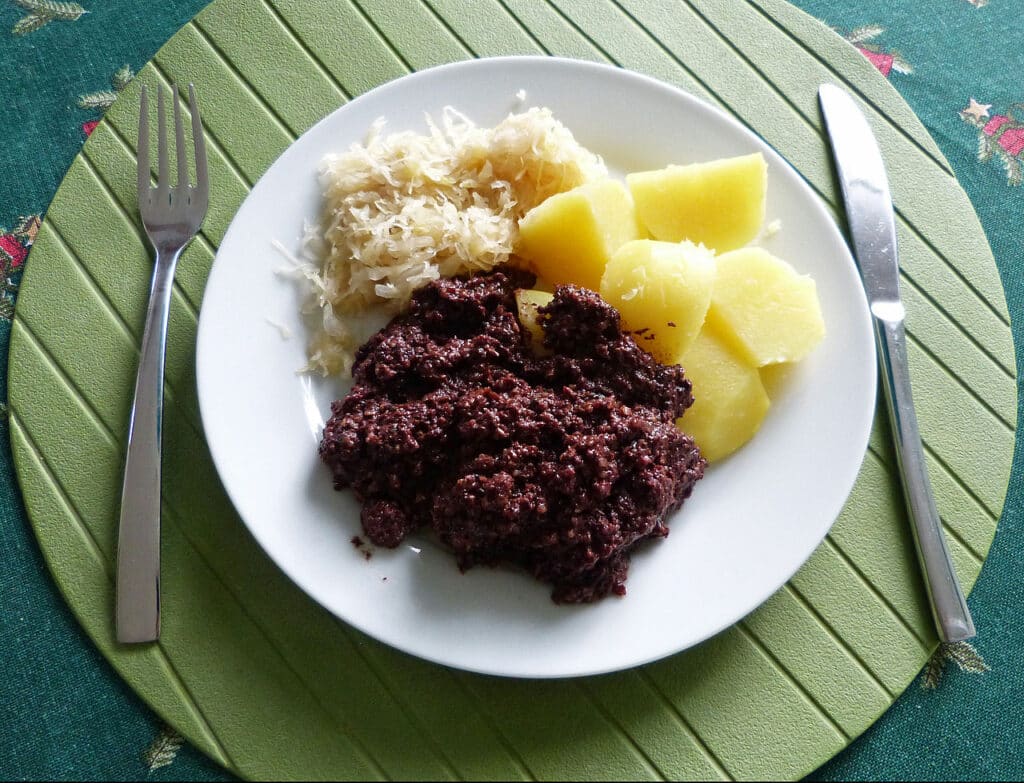
Dead Granny (Tote Oma)
With this dish, we East Germans also show how sarcastic we can be. Because Dead Granny refers mainly to the color of the food. The dish is prepared with Grützwurst, a blood sausage with some grains, and fried. It is usually accompanied by sauerkraut and potatoes. Tote Oma is also referred to as pot sausage (Topfwurst). First, onions are fried for the dish and then the grützwurst or blood sausage is added. The food does not necessarily look very delicious, but it certainly has its fans due to its particular taste!

Eggs in mustard sauce (Eier in Senfsoße)
Actually, the mustard egg is said to date back to the 19th century in Germany and appeared in cookbooks back then. Nevertheless, eggs in mustard sauce have become a very popular dish in the GDR, after all, eggs and mustard were quite easy to buy and it was part of the standard repertoire of every GDR canteen. The dish still includes potatoes. The sauce was made from mustard, broth, flour, butter and a little vinegar. Hence the sour taste.
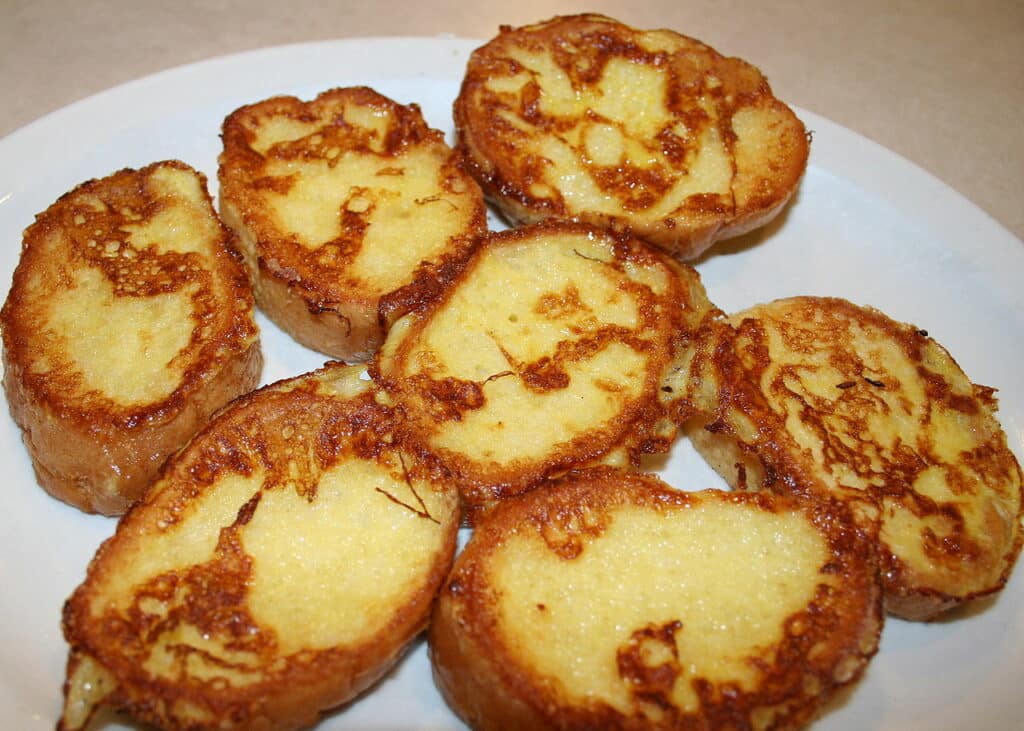
Poor Knight (Armer Ritter)
What the French toast is to the American, the Arme Ritter is to the East German. These slices of white bread or rolls are dipped in a mixture of milk, eggs, vanilla and sugar until they soften. Then they are fried in butter until they look nice and golden. This is usually served with vanilla sauce or jam.
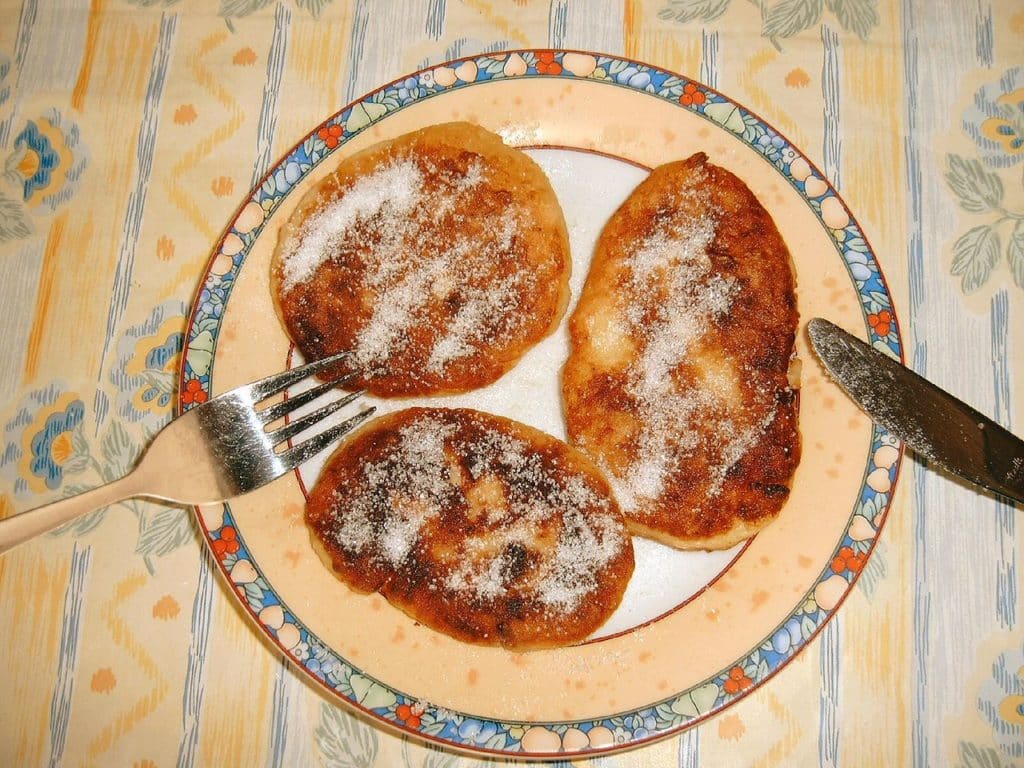
Curd cheese dumplings (Quarkkäulchen)
Quarkkäulchen are not only a dish that was known as GDR food. However, all the ingredients were easily available due to the shortage economy. Thus, the Quarkkäulchen has been able to establish itself in almost all corners of the GDR and is still eaten there with pleasure. The flat dumplings, which are somewhat reminiscent of meatballs, are made from potatoes, low-fat curd cheese, eggs and flour and sprinkled with sugar. Incidentally, this dish has also been around not just since the GDR, but even since the 14th century, when it was mentioned in a German cookbook. However, the GDR cooks have also made a virtue of necessity here.
GDR Fast Food
The GDR was an economy of scarcity. And it was precisely because of this need that the concept of fast food was actually perfectly suited to GDR cuisine. It was a relatively quick and easy way to fill up a large number of people. However, since the class enemy of McDonald’s and Burger King was forbidden to enter the East German market, the GDR developed its own fast food culture. The ingredients were mostly simple. And to avoid the impression of copying Western products, the products adapted for the GDR were given their own names.
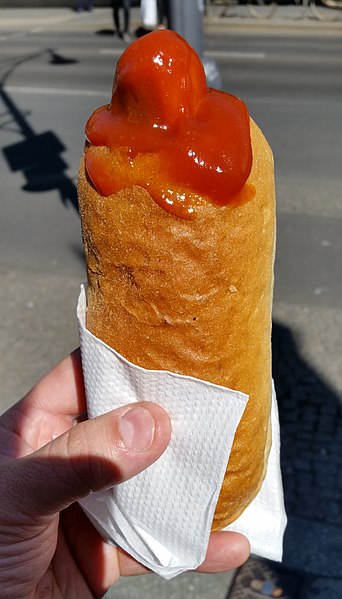
Grilletta – the GDR burger
The grilletta was the typical GDR burger for GDR citizens. Since words from the “imperialist West” were to be avoided as much as possible in the GDR, hamburgers were also not allowed to be called burgers. Instead, the meat buns were known as Grilletta in the GDR. GDR burgers were also adapted to the conditions of the GDR. For example, instead of a burger bun, as in Western fast-food chains in the GDR, typical round buns (Brötchen) were usually used. Ketchup was also rare and therefore sometimes even letcho or homemade chutneys of the restaurants were used.
Ketwurst – the GDR hot dog
Similar to the Grilletta, the Ketwurst was developed by employees of the Rationalization and Research Center for Restaurants in Berlin in the late 1970s. For example, the crowds of visitors around Alexanderplatz had become too much for the restaurants to handle and a solution was sought for catering them.
Instead of a special hot dog bun, the inventors used a long GDR bun (again a type of Brötchen, the German rolls). It was skewered on a hot metal rod. A previously baked or fried sausage was then pushed into the hole. The cavity was then filled with ketchup. The “ket” in ketwurst also comes from ketchup. It has become rare today and is only sold at a few snack bars in the former GDR.
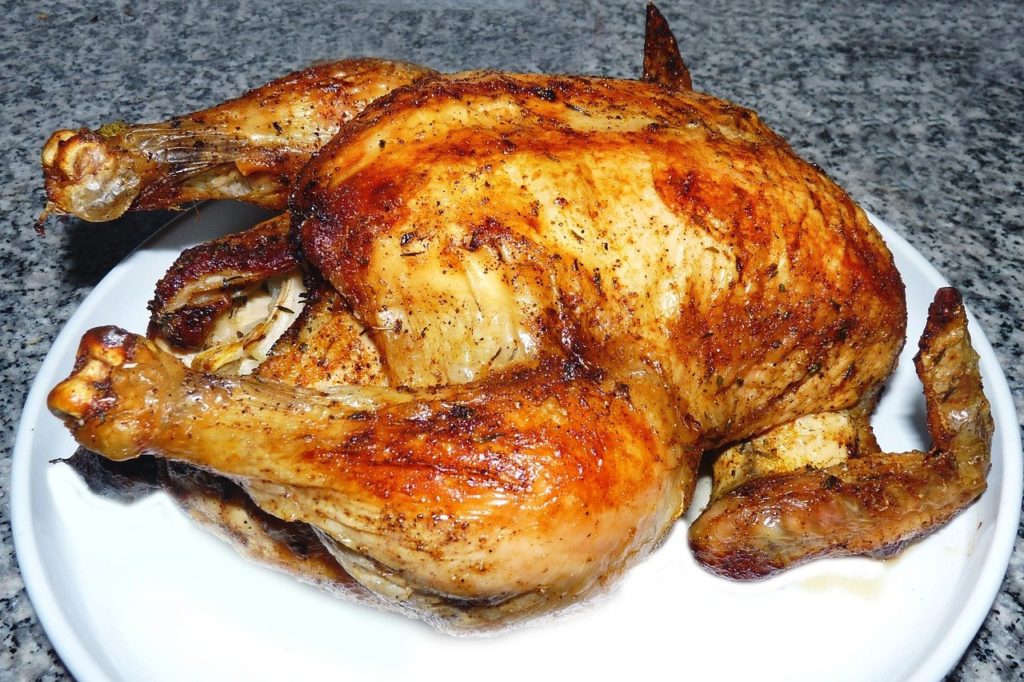
Golden Chicken (Goldbroiler)
Why the roast chicken was given an English name in the socialist GDR is disputed. Presumably, the states of the Council for Mutual Economic Assistance imported the first breeding chickens from an American farm. They arrived in the GDR via Bulgaria and were henceforth called broilers. They were one of the most popular meat products in the GDR and mostly came from the factories of the Kombinate Industrielle Mast.
Chickens for use usually weighed between 1.2 and 1.4 kilograms (2.5 to 3 punds). For home-made broiler, the chicken is first dipped in a mixture of mustard, tomato paste and spices. It should marinate in this mixture for a few hours so that it soaks into the meat nicely. After that, the broiler is roasted in the oven.
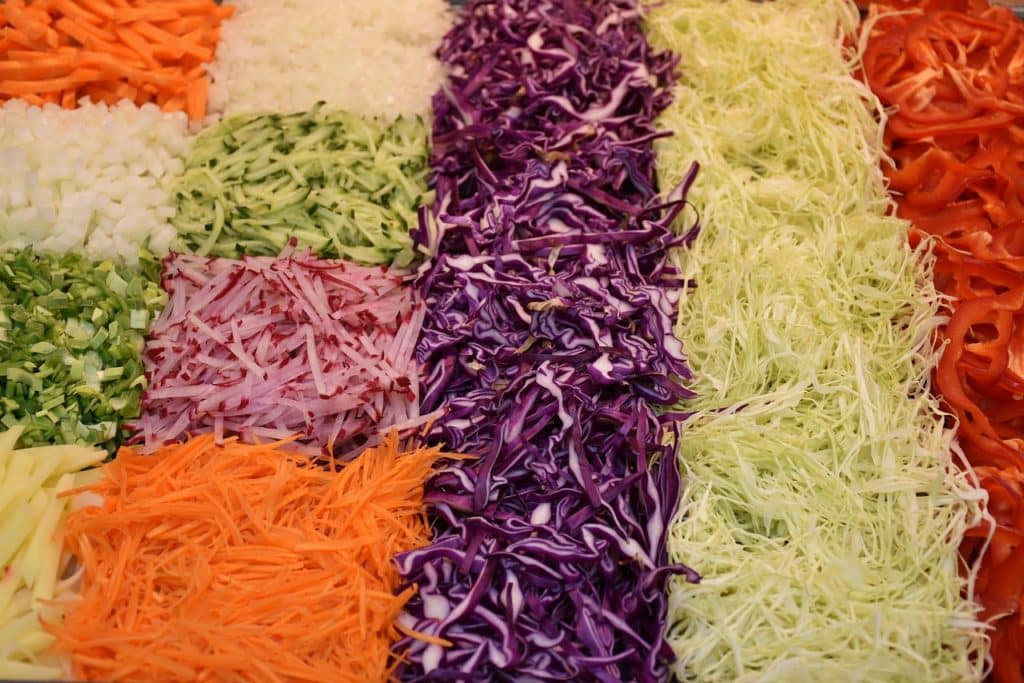
GDR side dishes – Simple, simpler, side dish
Raw vegetables (Rohkost)
Even though raw vegetables are available almost everywhere, raw vegetable salads were one of the most common side dishes in the GDR. Especially cabbage salads, white cabbage, carrots or tomatoes were served and belonged to almost every dish as a side dish in the HO restaurants.
Letcho (Letscho)
Why Letcho was so popular in the GDR cuisine is still a mystery to me. Personally, I don’t like the taste very much. The stew, which comes from Hungarian cuisine, consists of peppers, tomatoes, onions and bacon. Letcho is especially popular when grilling or with pasta. Often it was used as an alternative to ketchup in GDR food. I always disliked especially the skin of the tomatoes, which was often still loose in the Letscho and which one would have then sometime between the teeth.
GDR desserts – Endless sugar
The GDR was pretty good at desserts. Sugar was not in short supply. That’s why some of the main dishes described above were desserts. But what special desserts were actually available in GDR food?
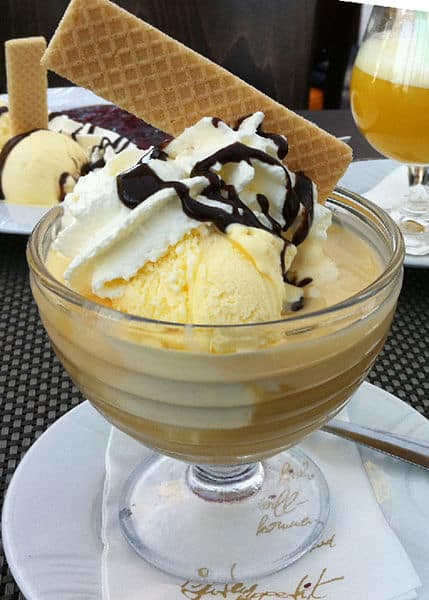
Swedish ice cream sundae (Schwedeneisbecher)
Ice cream was a rarity in the GDR. One of my earliest childhood memories is how we queued for ice cream at the local ice cream parlor with a thermos. You couldn’t always get a free table at the ice cream parlors either. The Swedish sundae, like all ice cream, was therefore in hot demand. It includes not only vanilla ice cream or milk ice cream, but also applesauce, vanilla sauce and eggnog.
The eggnog is one reason why it is especially popular with older ladies. Incidentally, it is said to have been given its name by Walter Ulbricht, the boss of the East German Communist Party at that time, after the Swedes beat the West German team 7:3 at the 1952 Winter Olympics. As a result, the ice cream was introduced in a café in Berlin-Pankow, where the government of the GDR was based. Whether this is true, is disputed.
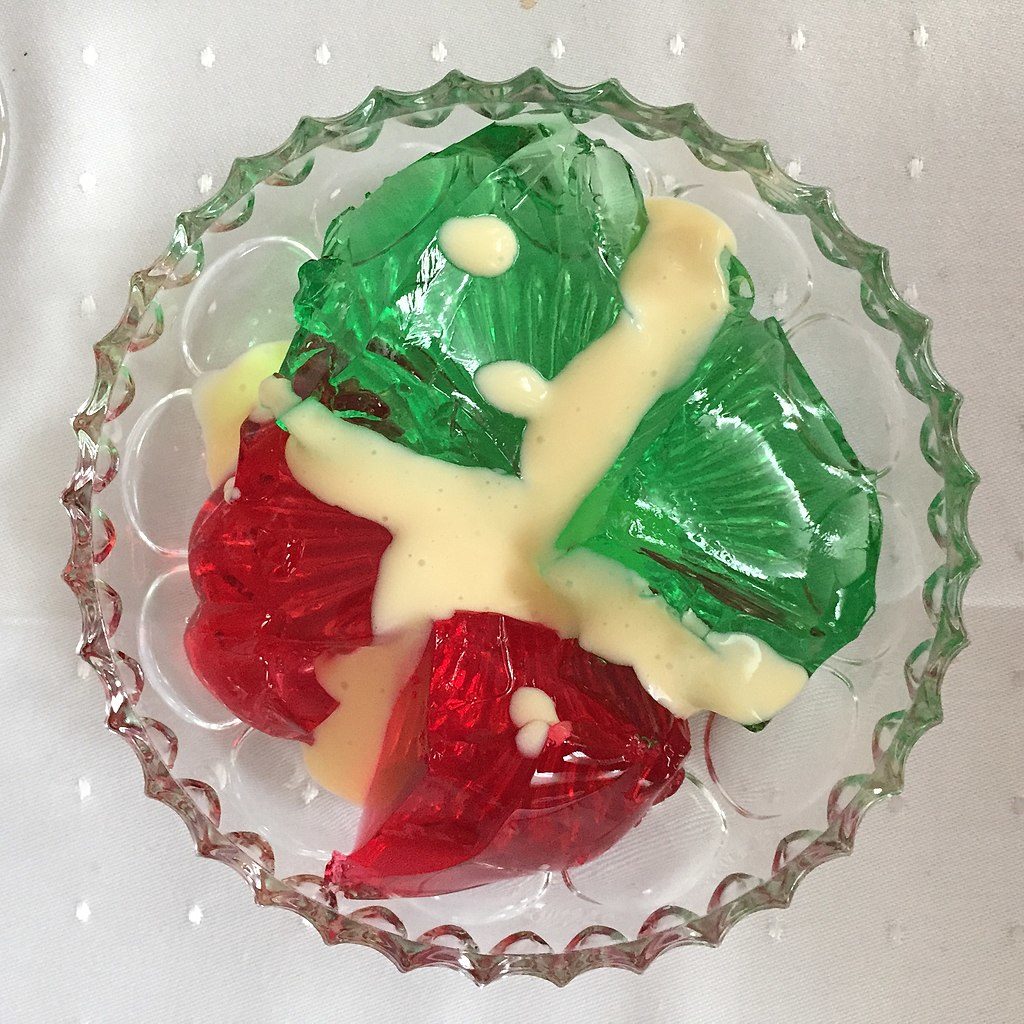
Jell-O (Wackelpudding or Götterspeise)
Jell-O which is called Götterspeise or Wackelpudding in East German cuisine, has also been a typical dessert in the GDR. The reason of the wide spreading in the GDR was above all the simple production. After all, it only needs gelatin, sugar, flavoring and coloring. Wackelpudding, literally meaning “shaking pudding”, was sold in the GDR mainly in green and red. The green Jell-O had an artificial woodruff flavor and the red Jell-O had a raspberry flavor. The Jell-O was produced under the brands Rotplombe in Erfurt and Komet in Saxony and distributed in the GDR. In the meantime, distribution has been revived by the Saxon company Komet.
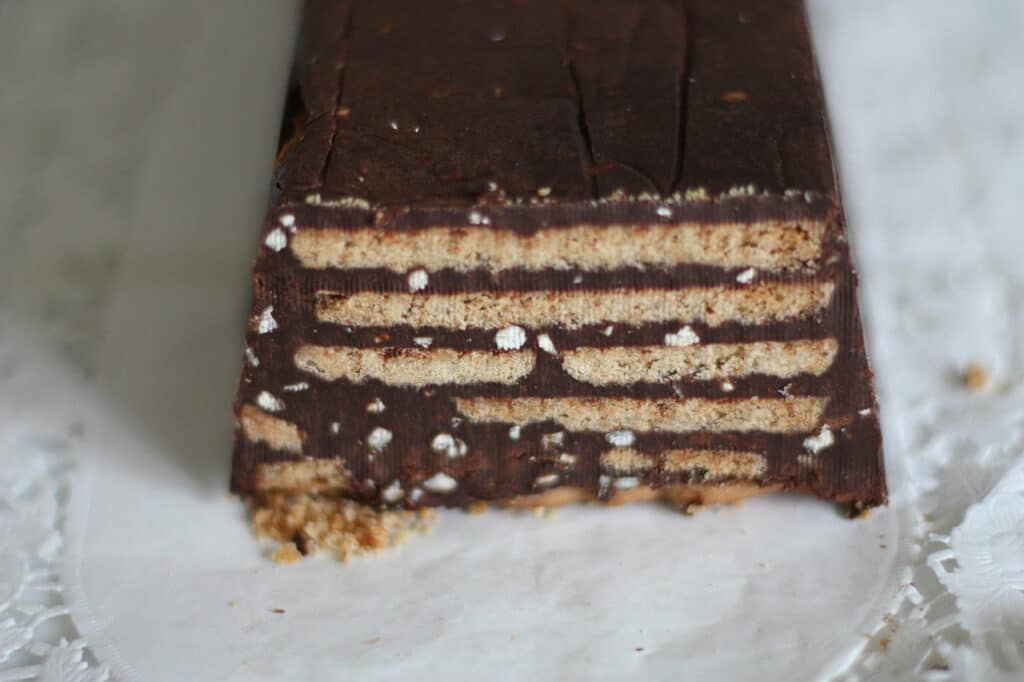
Cold Dog (Kalter Hund)
The Cold Dog (Kalter Hund) is also common throughout Germany but in the East it was especially popular, of course because it is extremely easy to make. To make the Cold Dog, simply pour a chocolate cream into a box-shaped cake pan. Gradually layers of butter cookies and then more layers of cocoa cream are added on top until the mold is filled. Then the Kalter Hund is cooled and the GDR dessert is ready.
GDR beverages – Making a lot out of a little
In addition to its own food culture, the GDR naturally also had its own drinking culture, which, like the food, often depended on the economy of scarcity and the lack of import opportunities from the West. Thus, fruits in particular were replaced in the beverages mainly by flavorings. But the taste was not always bad because of that. This is how some drinks were created that are now considered typically East German and are still popular today and are also part of the East German cuisine.
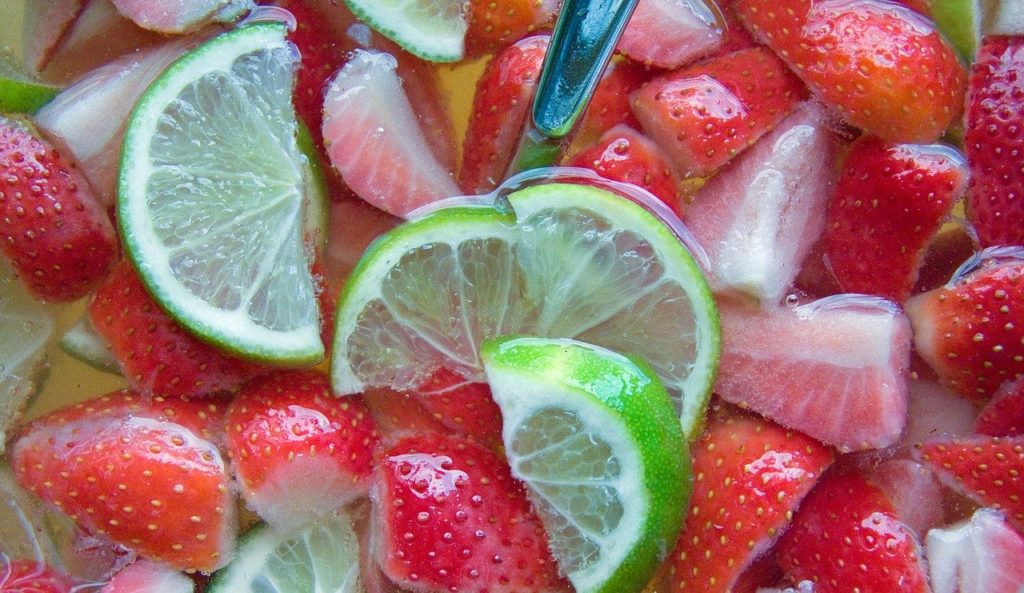
Punch bowl (Bowle)
In the GDR, punch was prepared and drunk mainly on special occasions. On birthdays, on New Year’s Eve, at brigade celebrations in the factories: Punch was often part of the festivities. One of the reasons for this was that punch is quite easy to make. All you need is preserved fruit, which in the GDR was easier to come by than fresh fruit. And sparkling wine was added. Rotkäppchen sparkling wine was also not as difficult to get as other things and therefore nothing stood in the way of preparing the punch.
Cola and lemonade
Lemonades were also easy to make and therefore available in many colors and varieties. Karena’s orange lemonade was particularly popular. And the GDR also had its own colas. In the East German state of Thuringia, Vita Cola is even still the market leader, which has been around since the GDR and was intended to replace Coca Cola and other Western products. Club Cola and Quick Cola were also popular. All colas are still produced today.
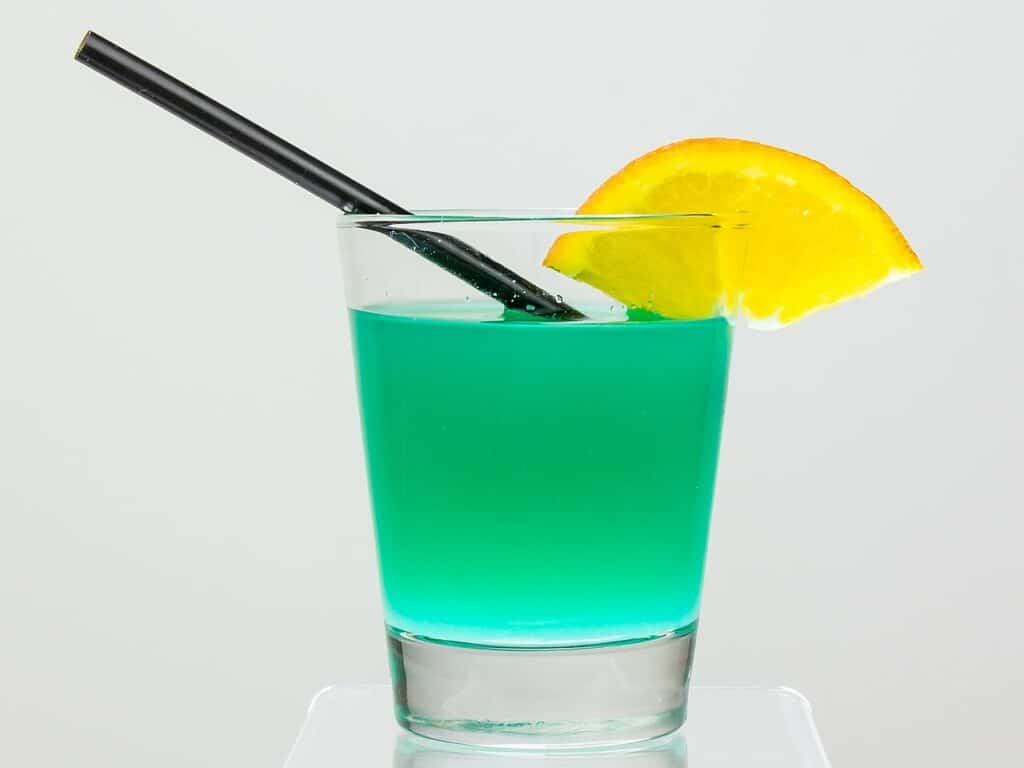
Green Meadow (Grüne Wiese)
The Grüne Wiese, meaning Green Meadow, was the classic long drink of the GDR. It emerged in the 1980s. Initially, the VEB Likörfabrik Zahna, the state-owned liquor factory, had produced its own curaçao liquor, which was blue. It was then mixed with orange juice and topped up with sparkling wine, which gave the drink its beautiful poison-green color. Even today, the Grüne Wiese is still enjoyed at parties in the East.
GDR book tips
Unfortunately there are no English-language books on East German cooking yet. Therefore we can’t recommend you any. If you happen to understand German, we recommend to visit the German text of this article. You can switch in the upper right corner and scroll to the bottom for German language cook books on GDR food. For anyone else we collected some interesting books on life in the GDR.
“The Ideal World of Dictatorship: Daily Life and Party Rule in the GDR, 1971-89” is a very accurate descirption of daily life and the politics behind it in the GDR. A great book to understand how the conditions in East Germany really were.
- Wolle, Stefan (Author)
If you want to understand the everyday life in the GDR it’s good to know it’s historical development. “The GDR: A History of the Workers’ and Peasants’ State” gives you a good overview of the developments in the country until it’s dissolution in 1990.
- Die DDR: Eine Geschichte des Arbeiter- und Bauernstaates
- Produkttyp: ABIS BOOK
- Marke: BerlinStory Verlag GmbH
Reading personal accounts of someone who has grown up behind the Berlin Wall, can tell you a lot about how life in the GDR really was. Therefore “Born in the GDR: Living in the Shadow of the Wall” is a good option for you to find out more in the communist state.
- Vaizey, Hester (Author)
Pictures can tell more than a thousand words. Therefore this book with pictures from everyday life in the GDR is gonna show you how this country looked like.
- Morgenstern, Klaus (Author)

